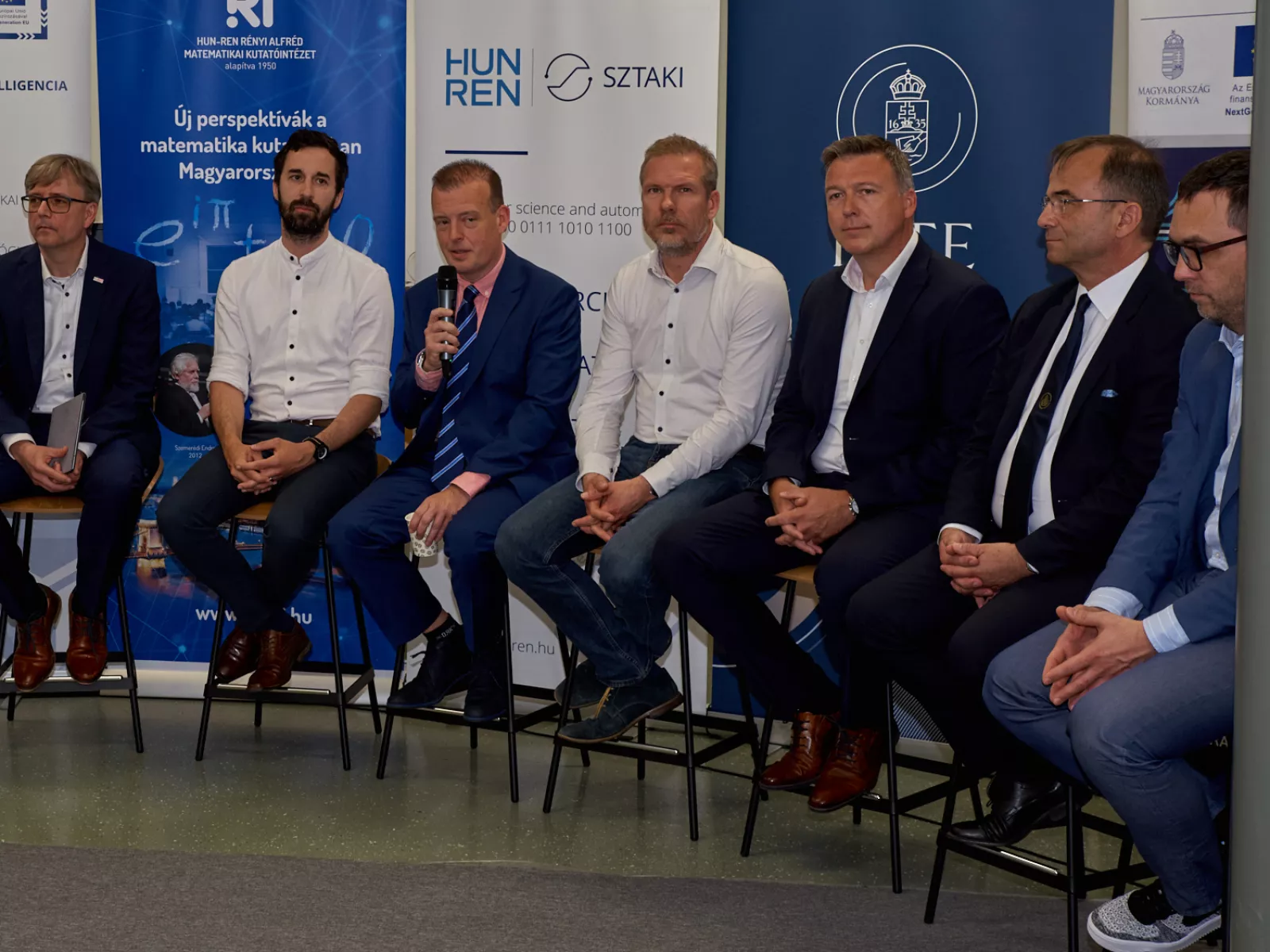
At a press conference held on June 2, 2025, dedicated to presenting its results, László Palkovics, the government commissioner responsible for artificial intelligence (AI), emphasized that the Artificial Intelligence National Laboratory (MILAB) is one of the most successful national laboratories. Established in 2020 under the coordination of HUN-REN SZTAKI, MILAB operates in collaboration with five universities, three additional research institutes, and two public administration entities. Its goal is to strengthen Hungary’s international position in AI research and application. As a continuation of the program, the professional day featured presentations by MILAB’s industrial and institutional partners showcasing practical applications of artificial intelligence.
One such AI solution, presented by the Hungarian State Treasury, is Theca, which supports the more efficient management of nearly 2.5 million digitized pension files—equivalent to approximately 150 million images. The system primarily aims to detect document boundaries and categorize them into typical groups. It also includes convenience features such as document search, image manipulation, and an internal chat service. The system is currently in limited live operation, with further developments—such as automatic retraining and quality control with minimal human oversight—expected to launch in the second half of the year.
Bosch highlighted that all products now reaching the market either contain artificial intelligence or are developed and manufactured using it. The company also provided insights into cutting-edge research areas, such as the potential of neuromorphic computing. In addition, it presented an AI-powered robotic unpacking system developed in collaboration with universities.
MAVIR, the operator and controller of Hungary’s critical electricity infrastructure, places great emphasis on operational reliability and accurate forecasting. In a joint project with BME and HUN-REN SZTAKI, aimed at forecasting transmission network losses one day ahead, it was crucial not only to improve efficiency but also to meet strict transparency and reliability standards. The presentation addressed the transmission network, its losses, and the AI-based algorithm developed, which offers higher efficiency than traditional human intelligence.
Ericsson’s presentation offered a comprehensive overview of R&D and collaborative projects related to telecommunications data and analytics products. A featured project led to multiple patents, scientific publications, and a PhD dissertation. It demonstrated how the troubleshooting process can be made more efficient by combining causal analysis with traditional AI-based explanatory models. The talk also explained how earlier MLOps results achieved through collaborations have been integrated into Ericsson’s product portfolio, improving their functionality and operational efficiency.
Audi Hungaria showcased the structure and operations of its in-house AI LAB, as well as the challenges encountered from initial ideas to enterprise-level AI implementation and strategic goal alignment. In the case studies presented, company experts emphasized the data-driven approach to quality control in manufacturing, and the critical role AI plays in development processes, such as numerical simulations. Applications included an image recognition AI for improving paint layer quality, and the structured preparation of technological data for multi-body dynamics simulations of vehicle suspensions. The company’s goal is to enhance the efficiency of both its own operations and, in part, those of its parent company by leveraging the domestic AI ecosystem.
The field of healthcare was represented by the Városmajor Heart and Vascular Centre of Semmelweis University (SE) and the Buda Health Center. As part of SE’s cardiovascular health project, AI-based online calculators have been developed to assess and continuously monitor athletes’ performance and endurance. These tools provide regular feedback to both athletes and coaches on current physical condition and training effectiveness, potentially supporting the optimization of personalized training plans and boosting sports performance. Despite modern, Western European-level treatment of heart attacks, long-term survival rates for Hungarian patients remain poorer. Improving this could save thousands of lives annually (so-called avoidable mortality). To address this, a post-infarction risk calculator tailored to Hungarian patients was developed in collaboration with HUN-REN SZTAKI, and research began into patients’ biological age and the significance of accelerated aging using AI.
The Buda Health Center, supported by the University of Szeged, applies an AI solution in spinal diagnostics that simplifies and clarifies MRI results, thereby improving the quality of patient care. Plans were also shared for a new center dedicated to AI-based solutions in healthcare.